Latest News From Smidge Wines
Willunga Magic Dirt Shiraz with Stout Pies

Ingredients:
- 500g beef brisket, cut into bite-sized chunks, dusted in plain flour
- 30 ml vegetable oil
- 1 large onion, diced
- 2 cloves garlic, minced
- 2 carrots, peeled and diced
- 2 large potatoes, peeled and diced
- 1 x cup of stout beer (Swell Foreign Export Stout)
- 240 ml beef broth
- Tbs tomato paste
- 1 Tsp Thyme leaves
- Salt and pepper to taste
- 1 ready-made puff pastry sheet
- 1 egg, beaten (for brushing)
Instructions:
1. Prepare the Filling:
- Toss the beef chunks in flour, salt, and pepper.
- Heat the oil in a large pot over medium-high heat. Add the beef and brown on all sides. Remove and set aside.
- In the same pot, add the onion, garlic, carrot, and potatoes. Sauté until the onion becomes translucent.
- Return the beef to the pot. Add the stout beer, beef broth, tomato paste, thyme, salt, and pepper. Stir well.
- Bring to a simmer, then cover and let it stew on low heat for about 45 minutes or until the beef and vegetables are tender and the sauce has thickened.
2. Assemble the Pie (s)
- Preheat the oven to 200°C.
- Pour the beef mixture into a baking dish (or ramekins).
- Roll out the puff pastry sheet to cover the baking dish. Place it over the filling, trimming off any excess, and crimp the edges to seal. Cut a few slits on the top to allow steam to escape.
- Brush the pastry with beaten egg.
3. Bake:
- Place the pie on a baking tray to catch any drips, then bake for 25-30 minutes or until the pastry is golden brown and flaky.
4. Serve:
- Let the pie rest for a few minutes before serving to allow the filling to settle.
Enjoy your delicious pie with a glass of Magic Dirt
Pumpkin, Zucchini & Feta Pizza
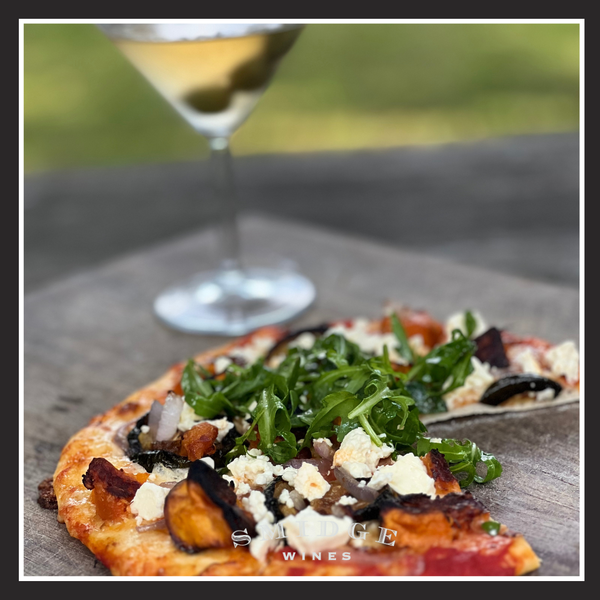
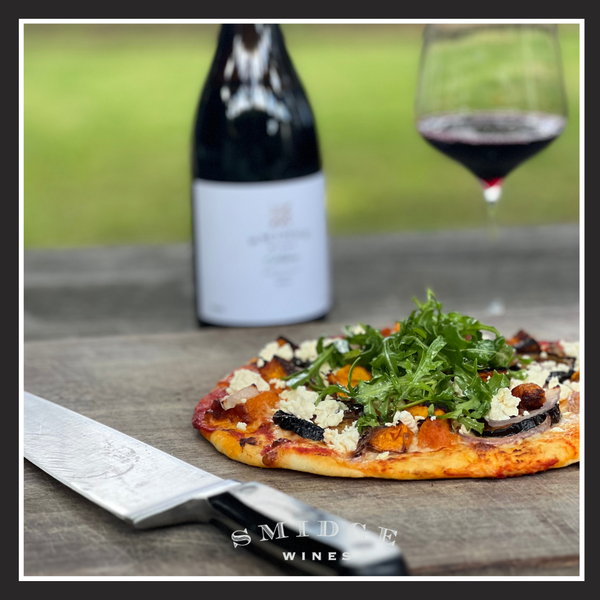
To complement this meal, a glass of 2020 Adamo Barossa Shiraz is the perfect choice. This wine, with its fruity and slightly spicy notes, pairs well with the savory and sweet elements of the pizza. The combination of the food and wine creates a simple yet satisfying dining experience, ideal for a relaxed night at home.
Part 1: Pizza Base (Inspired by Jamie Oliver)
Ingredients:
- 1 kg plain flour
- 14 grams dried yeast (2 sachets)
- 600ml warm water
- A glug of olive oil
- a pinch of salt (do not mix directly with the yeast)
Instructions:
1. Dough Preparation: In a large mixing bowl, combine the flour, yeast, warm water, and olive oil. Mix until it forms a dough.
2. Resting: Cover the dough with a damp tea towel and let it rest until it doubles in size and you're ready to use it.
This base recipe is adapted from Jamie Oliver's approach, known for its simplicity and reliability. For more detailed instructions and variations, you can refer to [Jamie Oliver's Basic Pizza Dough Recipe](https://www.jamieoliver.com/recipes/bread-recipes/basic-pizza/).
Part 2: Toppings Preparation
Instructions:
1. Roasting Vegetables: Preheat your oven and roast the chopped pumpkin and sliced zucchini until they are soft and slightly caramelised. The size of the pumpkin pieces isn't precise, as long as they provide even coverage on the pizza.
2. Caramelizing Onion: In a small pan, soften the sliced Spanish onion with some olive oil until sweet and tasty.
Part 3: Assembling and Cooking
Instructions:
1. Roll Out Dough: On a floured surface, roll out your pizza dough to the desired thickness.
2. Adding Sauce and Cheese: Spread a layer of tomato passata or sauce over the dough, followed by a sprinkle of pizza blend cheese and a bit of dried oregano.
3. Adding Toppings: Arrange the roasted zucchini, caramelized onion, and pumpkin evenly on top.
4. Cooking: Using a small electric pizza oven, cook the pizza until the base and top are done to your liking.
5. Final Touches: Once cooked, remove the pizza and sprinkle it with good-quality feta cheese and lightly dressed rocket leaves with olive oil and white balsamic vinegar.
Enjoy!
Cut into slices and enjoy your homemade pizza with a delightful blend of flavours and textures.
Ingredients:
- Pumpkin, peeled and chopped (quantity as desired for even coverage)
- Zucchini, sliced into 5-6mm slices
- 1 Spanish onion, sliced
- Olive oil
- Tomato passata or sauce
- Pizza blend cheese
- Dried oregano
- High-quality feta cheese
- Rocket (arugula) leaves
- White balsamic vinegar
Recipe: Burrata with Heirloom Tomatoes & Basil
Tomatoes, basil, and olive oil form a classic flavor combination, offering a balance of acidity, aroma, and richness. The introduction of burrata, with its creamy texture and mild taste, elevates the combination, bringing depth and a smooth finish to a delicious and easy to prepare dish.
Ingredients:
- 1 ball of your favourite, fresh burrata cheese
- 2 cups assorted heirloom tomatoes, sliced in different, bite sized shapes
- A handful of fresh basil leaves
- Balsamic vinegar (to taste)
- Extra virgin, McLaren Vale olive oil (to taste)
- Sea salt and freshly ground black pepper, to taste
- Sliced ciabatta bread
Ingredients:
1. Heat a grill pan over medium heat and brush the ciabatta slices with olive oil.
2. Place the ciabatta slices on the grill pan and toast until golden and crispy, with char marks, about 2-3 minutes per side. Remove and set aside.
3. On a serving plate, arrange the sliced heirloom tomatoes.
4. Carefully place the burrata in the center of the tomatoes.
5. Scatter the fresh basil leaves over the tomatoes and burrata.
6. Drizzle the dish with balsamic vinegar and extra virgin olive oil to taste.
7. Season with sea salt and freshly ground black pepper.
8. Serve the toasted ciabatta alongside the burrata and tomatoes.
9. Enjoy this dish with a glass of chilled McLaren Vale Fiano.


Rosé Over Roses for Valentines Day with a Perfectly Paired Dish for Someone Special

Imagine gifting 3, 6 or even a dozen bottles of our finest rosé, each a testament to the care and craft we pour into our vines. These bottles aren't just wine; they're stories of sun-drenched days, cool evening breezes, and the rich terroir of our land.
Offering a bouquet of rosé is inviting your special someone to share a story sip by sip. It's a heartfelt way to mark the day promising shared moments and cherished memories.
The Perfect Pair
Recipe: Beef Carpaccio
Here's a simple yet delicious beef carpaccio that'll pair beautifully with your Valentine's rosé.
Ingredients:
- 300g premium beef fillet
- A drizzle of McLaren Vale extra virgin olive oil
- A pinch of sea salt and cracked black pepper
- A handful of fresh rocket (or Lincoln weed / wild Australian rocket that grows in many vineyards in McLaren Vale)
- Parmesan shavings, as generous as you like
- A dash of lemon juice, for that zest
- Capers, to taste.
Method:
1. First wrap the beef in Glad/Cling Wrap and chill in the freezer for about 20 minutes to an hour. Once it is a firm texture it will make slicing easier.
2. Thinly slice the beef across the grain. Lay the slices out on a plate, cover with Glad/Cling Wrap, and give them a gentle press with a rolling pin or the bottom of a pan to get them tissue paper thin.
3. Arrange the beef on your serving dish. Now, drizzle with olive oil and season with salt and pepper to taste.
4. Toss the rocket with a bit of olive oil and lemon juice, then scatter over the beef. Add Parmesan shavings and capers to round it all off with some freshly cracked pepper.
5. Serve with a chilled glass of rosé and watch the magic happen.
Enjoy!
Cheers
Matt
Why is Our Shiraz in a Pinot Bottle? - Good Question!
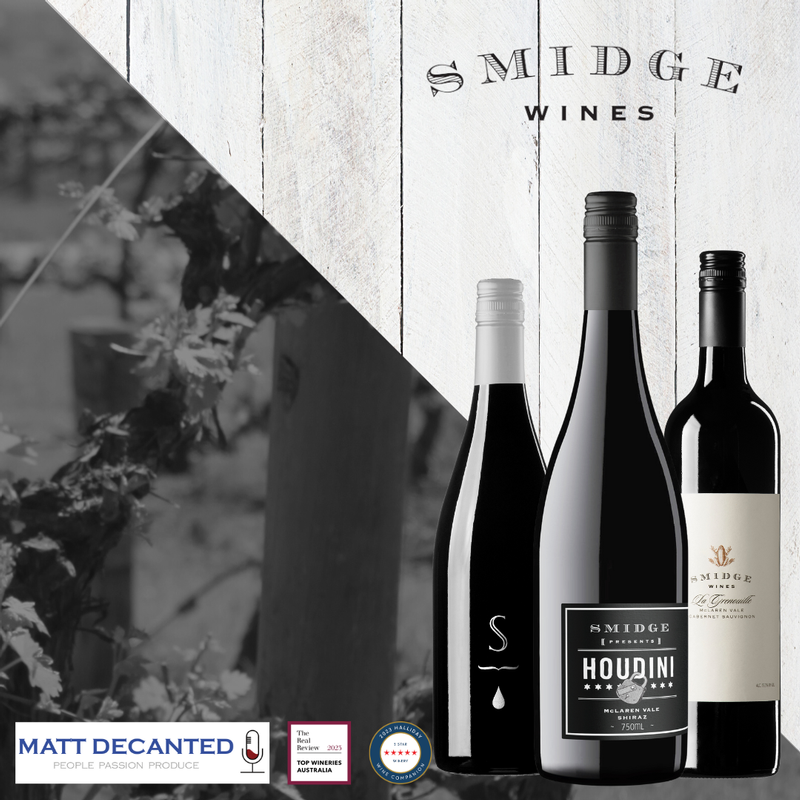
I was recently asked why we bottle our Houdini Shiraz in a Burgundy bottle, this is the first time we’ve had this question and thought it might be interesting for others.
Unlike the glasses we drink from, or the closure of a bottle, the shape bottle doesn’t really impact the taste or development of our wine. Historically, in particular, looking at "old world" wines, the bottle shape was more influenced from where it came from, for example Bordeaux (the tall high shouldered claret shape) or Burgundy (the low shouldered, more curvy shape). Equally, there is no ‘Shiraz bottle’, although the wines of the Rhone Valley, which is the home of Shiraz (and Grenache) in France, use a Burgundy shaped bottle. This bottle used in Burgundy (Pinot noir, Chardonnay and Aligote) and the Rhone are the same shape, although regularly differ in diameter and height. The rationale for the different shapes is varied, although historically many argued about the size and shape of the bottle and the associated air pocket seen in a bottle when laying on its side resulted in differing contact with and influence on the wine.
Today, it can be argued that the use of the Burgundian bottle for Australian Shiraz can stem from the influence of regions such as the Rhone Valley, where Shiraz is the predominant variety in many subregions. This is the case for Smidge Wines. Equally, some suggest the current use of the Burgundy bottle has been used to demonstrate the move towards a more distinct Australian Shiraz style, and away from Australia’s historical and prevalent use of the Bordeaux shape, which is now mainly reserved for Cabernet sauvignon, blends thereof and other Bordelaise varieties.
Week 23: Week in Review
The start of winter was true to its name this week, with heavy rain and extensive electrical storms filling the air with nitrogen and the soil with water. The vines unfortunately won't benefit from the nitrogen without their leaves, although will enjoy the soil moisture in spring upon budburst and early growth.
As a micro producer, it means we are hands on at each stage of production and sales. So between some packing and deliveries we found ourselves bottling our La Grenouille Cabernet this week.
Rounding out the weekend was our monthly cellar door opening, where we got to share a few winter warmers with local wine enthusiasts!
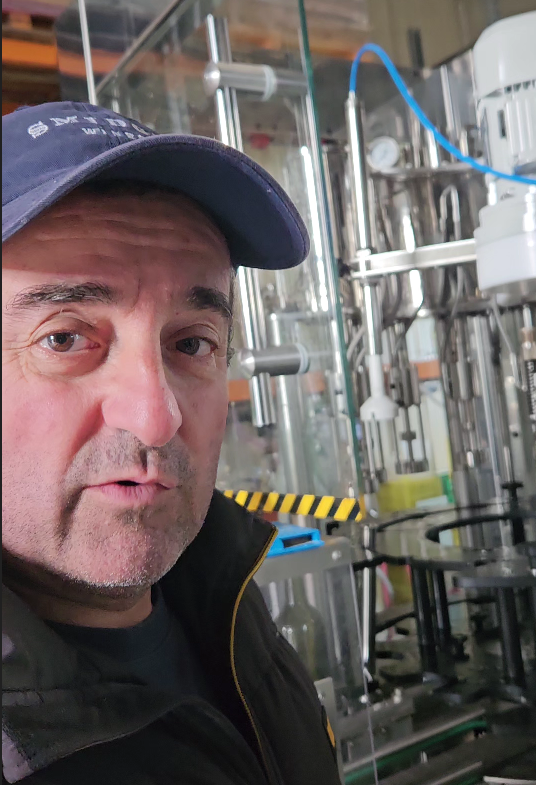
Week 22: Week in Review
Week #22: This week it was time for a new vintage of Cabernet being blended and the last of the 2023 Cabernet batches going to barrel, as such it felt like a game of tetris, juggling tanks and barrels of wine.
At Smidge, the majority of our wines are matured in fine grained French oak (Taransaud and Cabernet sauvignon work well together) and looking after these barrels is a top priority. Not only because they are expensive, but cleanliness is extremely important. To ensure the hygiene of one's barrels is maintained, a couple of main tasks are often employed. At Smidge, we use a specialised barrel washer coupled with a pressure cleaner that delivers 90+ degrees C filtered water at low volume and high pressure.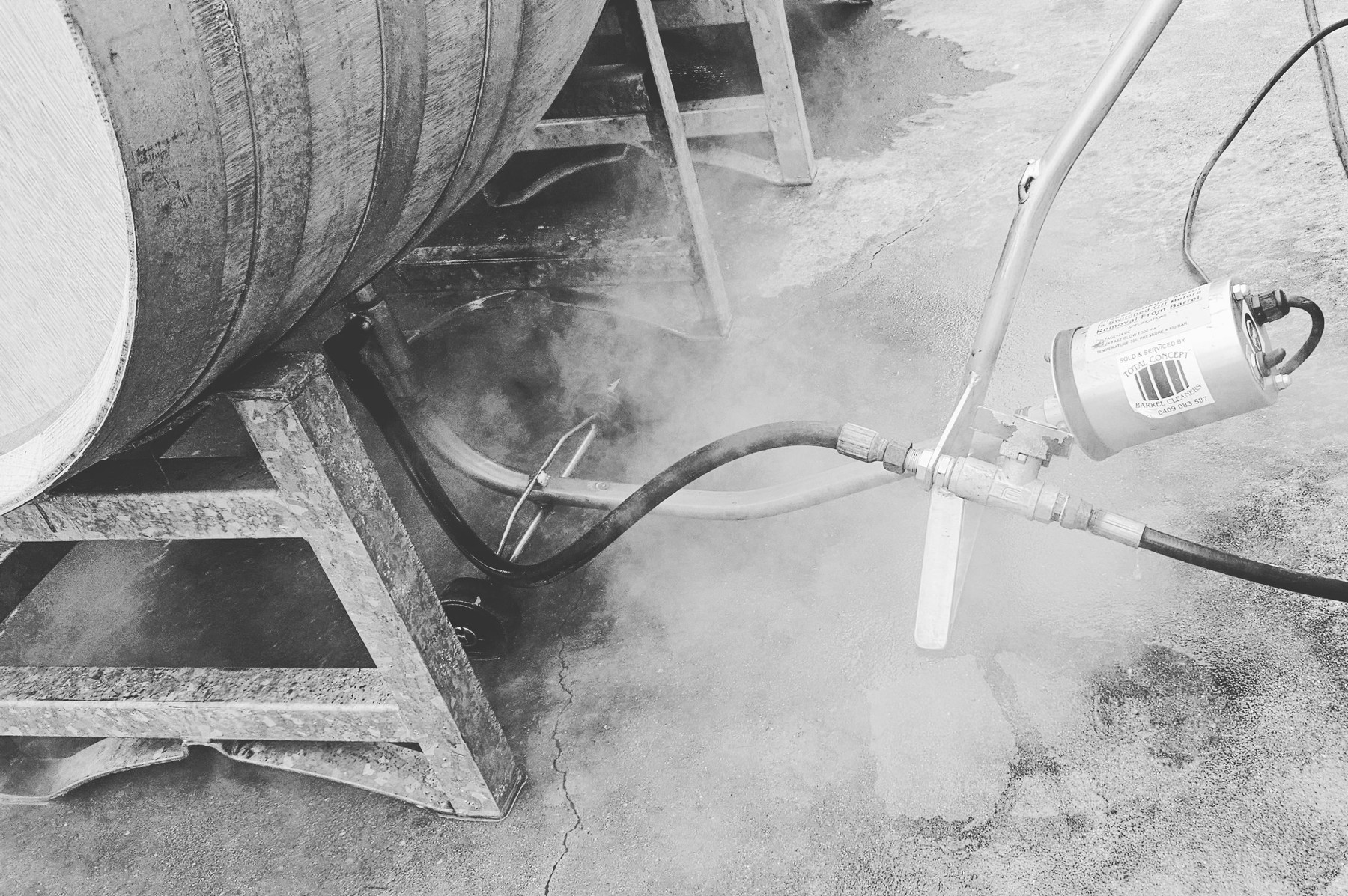
The temperature and pressure removes tartrates (unstable crystals that precipitate out of wine over time) from the inside surface of the barrel and the temperature/steam also sanitises the barrels, helping to keep unwanted bacteria and yeasts at bay. Cheers! #australianwine #operations #winemaking
Leaves Turning!
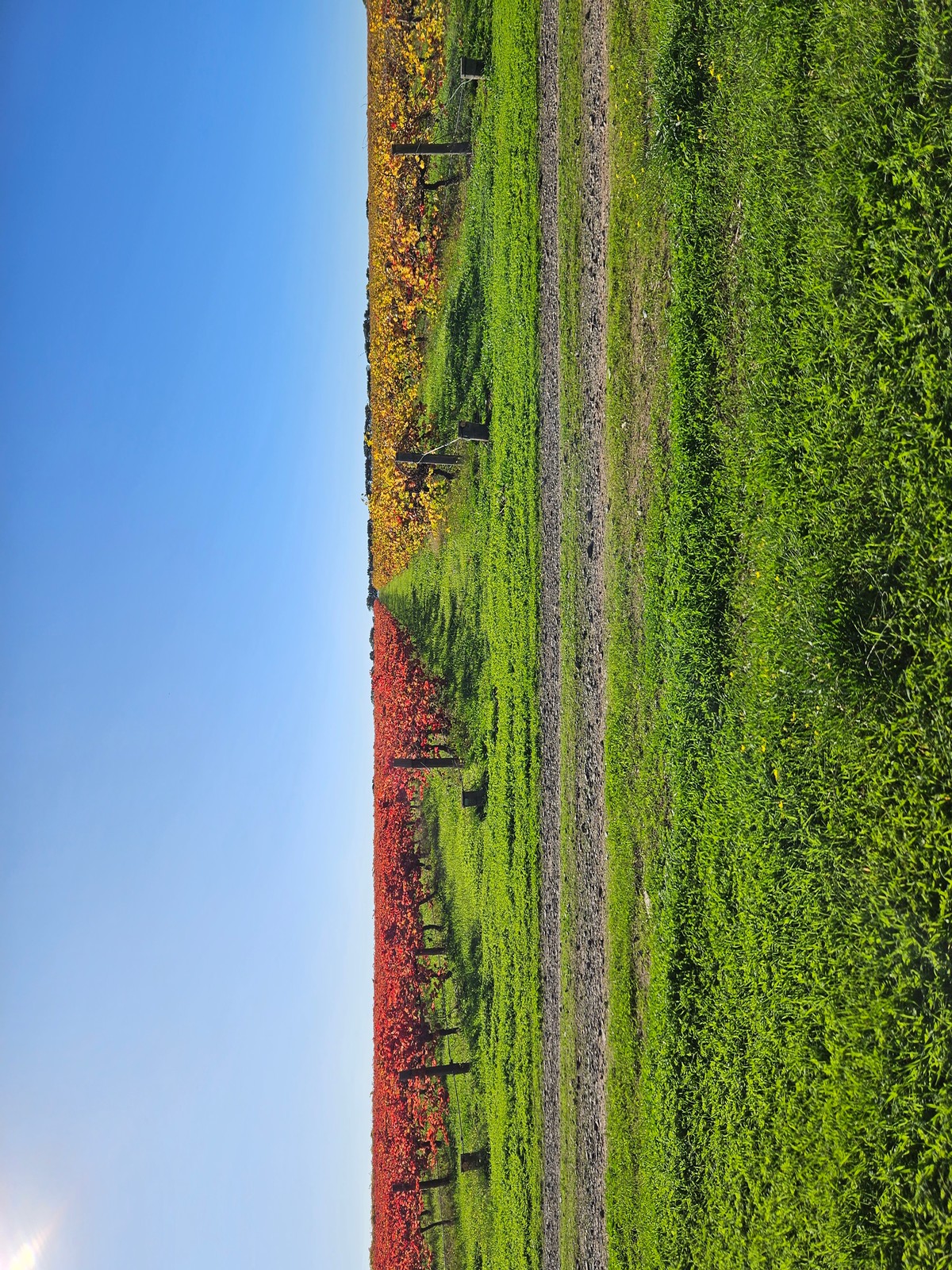
It’s not often during the growing season that we see such a distinct line showing 2 varieties. For a very small window, we had a beautiful reminder that the differences between varieties that go well beyond fruit colour and flavour to the different pace that vines go dormant, and the underlying pigments that exist in the vines themselves.
Fun Fact: The autumnal colours in vine leaves are present for the full growing season. It is not until the temperate & light reduces as we approach winter, and the green Chlorophyll used for photosynthesis degrades leaving original pigments (carotenoids (yellow- orange), and Anthocyanins (red – to purple).
Top Wineries of Australia 2023
We are thrilled to get news that we made The Real Review's 2023 Top Wineries of Australia List for our third consecutive year. A huge thanks to Huon Hooke and his team, we appreciate being in the company of wineries on the list. Cheers! #australianwine #winemaking #mclarenvale
